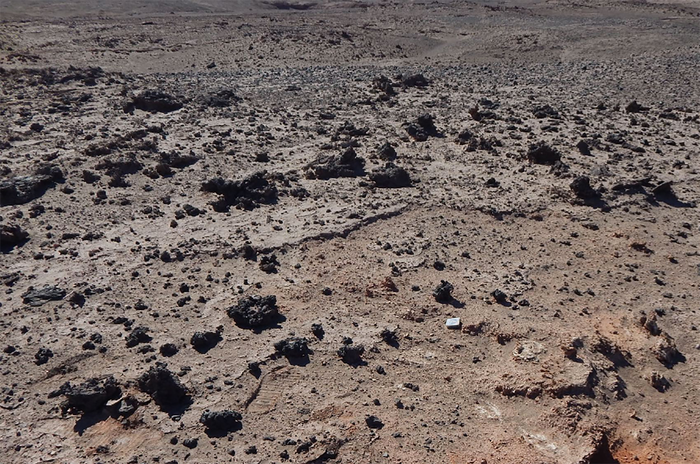Mysterious patches of glassy rock across Atacama Desert formed by explosion of ancient comet, study says
Intense heat from ancient comet explosion in Earth’s atmosphere may have burnt sand into glassy minerals

Vast patches of glassy rocks found across the Chilean Atacama Desert may have been formed due to intense heat from a comet exploding in the Earth’s atmosphere about 12,000 years ago, a new study has found.
The research, published in the journal Geology, suggested that intense heat and winds from an ancient comet exploding in the Earth’s atmosphere may have burnt the sand into glassy minerals.
Scientists, including those from Brown University in the US, found that these glassy minerals closely resemble the composition of material returned to Earth by Nasa’s Stardust mission, which sampled the particles from a comet called Wild 2.
These mysterious glassy rocks are concentrated in patches across the Atacama Desert east of Pampa del Tamarugal, a plateau in northern Chile nestled between the Andes Mountains to the east and the Chilean Coastal Range to the west.
“This is the first time we have clear evidence of glasses on Earth that were created by the thermal radiation and winds from a fireball exploding just above the surface,” the study’s co-author, Pete Schultz from Brown University, said in a statement.
They believe the minerals found now are likely the remains of a comet with a composition similar to that of Wild 2, which may have streamed down after the explosion that melted the desert’s sandy surface.
“To have such a dramatic effect on such a large area, this was a truly massive explosion. Lots of us have seen bolide fireballs streaking across the sky, but those are tiny blips compared to this,” Dr Schultz added.
Previous research had speculated that the glassy minerals could have formed from ancient grass fires as the region was not always a desert.
Studies have found that this area was home to numerous oases with trees and grassy wetlands during the Pleistocene epoch, about 2,580,000 to 11,700 years ago. Some scientists have suggested that wildfires in the region may have burned hot enough to melt the sandy soil into large glassy slabs.
But the latest study has found that such fires may not have had enough energy to transform the soil into the amount of glass present today.
Researchers say there may have been a large incoming meteor and an airburst explosion accompanied by tornado-force winds based on the evidence available in the glass, showing they were twisted, folded, rolled and even thrown while still in molten form.
They also found exotic minerals in the rocks such as cubanite and troilite that are only found in comets and other extraterrestrial bodies, as well as evidence that minerals in the rocks called zircons had thermally decomposed to form baddeleyite – a transition that typically happens at temperatures far hotter than those generated by grass fires.
“Those minerals are what tell us that this object has all the markings of a comet,” the study’s co-author Scott Harris said. “To have the same mineralogy we saw in the Stardust samples entrained in these glasses is really powerful evidence that what we’re seeing is the result of a cometary airburst.”
While more studies are needed to narrow in on the particular time when the cosmic event took place, researchers said it may have happened tentatively after the arrival of proto-archaic hunter-gatherers in the region — a time when large mammals also disappeared from the region.
“It’s too soon to say if there was a causal connection or not, but what we can say is that this event did happen around the same time as when we think the megafauna disappeared, which is intriguing,” Dr Schultz said.
“There’s also a chance that this was actually witnessed by early inhabitants, who had just arrived in the region. It would have been quite a show.”
Join our commenting forum
Join thought-provoking conversations, follow other Independent readers and see their replies
Comments
Bookmark popover
Removed from bookmarks